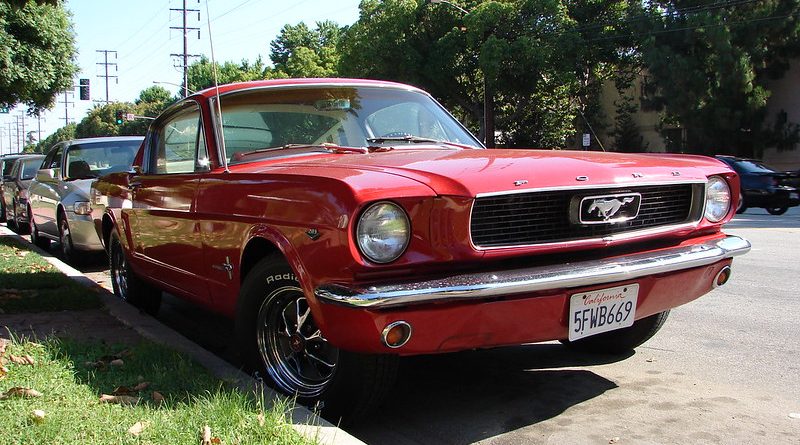History of the American Car Industry
Practically synonymous with America’s rise and fall as the world’s greatest industrial powerhouse, the American car industry is a significant facet of the country’s culture and history.
A country reliant on automobiles, the United States dominated the early years of car manufacturing in terms of production. Indeed, from the turn of the 20th century until well into the 1980’s, America was comfortably the world’s largest producer of automobiles.
Despite the presence of considerable competition in the automobile manufacturing industry at the beginning of the 20th century, this subsided quickly. Three important companies, all based in the Detroit area, emerged as major powerhouses, utterly dominating the industry by the end of the 1920’s. These companies were General Motors, Chrysler and Ford. As the Great Depression gripped the country, all the competition withered away and the big three consolidated their domination of the market.
General Motors was founded in 1908 in Flint, Michigan by William Durant and its instant success allowed the company to acquire a number of smaller yet iconic car companies, most notably Buick and Cadillac. Under the leadership of Alfred P. Sloan, the company became the biggest car manufacturer in the world, decentralising the company in order to make it more effective. GM was known for its innovation in catering to different social classes with varying price structures.
The Ford Motor Company, founded in 1903 by Henry Ford, had a contrasting approach to General Motors. Known as the first major American car company, Ford was known for their mass-production innovations, which complimented the company’s philosophy. The company valued producing a simple vehicle for public mass consumption. This approach was initially successful, although the company was quickly outpaced by GM, causing it to diversify and cater to different social classes.
Chrysler was founded in 1920 by Walter Chrysler, a former GM executive. His experience within the company allowed him to gain valuable insights into the industry, and his quick acquisition of Dodge allowed the Chrysler to expand his operations significantly, following a similar business model to GM.
These three titans dominated the industry for decades, outliving any remaining rivals and surviving a number of obstacles as the century progressed. The American auto industry boomed in the mid-20th century and the Big Three remained attuned to the stylistic innovations of the time. Problems began to emerge in the 1960’s as environmental and safety issues became more of a public concern, which saw the introduction of the Catalytic converter as federal regulation became increasingly utilised.
By the 1970’s, more pressing issues emerged from a number of different areas. Foreign imports were becoming increasingly common, with the Japanese Toyota and the German Volkswagen offering different alternatives to American-style cars and cutting into their dominance of the American market. The companies’ attempts to adapt and compete with foreign designs initially ended in failure.
The 1973 oil crisis can be seen as a catalysing event in the history of the American oil industry. Not only did Arab oil embargoes negatively effect these companies in a significant way, but it lead to even greater government regulation and a renewed emphasis on fuel efficiency standards. This caused gas prices to skyrocket, something which the Big Three struggled to adapt to. Chrysler and GM had to downsize, with the former having to be bailed out in 1979 by the federal government. Despite their major successes decades earlier, problems continued to mount as the Big Three struggled to adapt to a changing industry and effectively a new chapter in the American century.
Foreign dominance grew, with Japanese cars becoming increasingly popular. This popularity forced car companies being forced to limit the number of exports to around 1.7 million a year, which they used to their advantage by exporting luxury cars to the US, increasing profit margins. The end of the 1980’s saw a brief renaissance of the American car industry, due in part to falling oil prices. All of the Big Three, particularly GM, adapted well to the vast technological innovations in the industry at the time such as fuel injection and disc brakes. Additionally, the Big Three had began to invest in foreign car companies as a means of limiting competition.
Despite this, as the 1990s progressed, foreign manufacturers began to strengthen their hold in the United States. Honda, Toyota, Volkswagen and BMW all opened major manufacturing plants in industrial regions of the country, signifying the decline of the Big Three’s dominance.
At the turn of the new millennium, the American Auto Industry reached its lowest ebb yet. Environmental concerns saw significant investment in renewable energy-powered vehicles, while rising oil prices remained a troubling concern. The economic recession of 2008 however proved to be a devastating blow, triggering the Automotive Industry Crisis of 2008-10. While Ford emerged comparatively unscathed, GM and Chrysler were left devastated. All requested financial aid, with Chrysler declaring bankruptcy, causing partner Fiat to assume greater control.
While The Big Three have, relatively speaking, stabilised since their all-time low, they remain in a vulnerable position and certainly do not exert the same dominance of the American market as they once did. The continued prevalence of foreign powerhouses and the decline of the domestic manufacturing industry have also contributed to this. While the American car industry still survives, it remains a shadow of its former glories.
main image: courtesy of Gareth Simpson, Flickr creative commons




